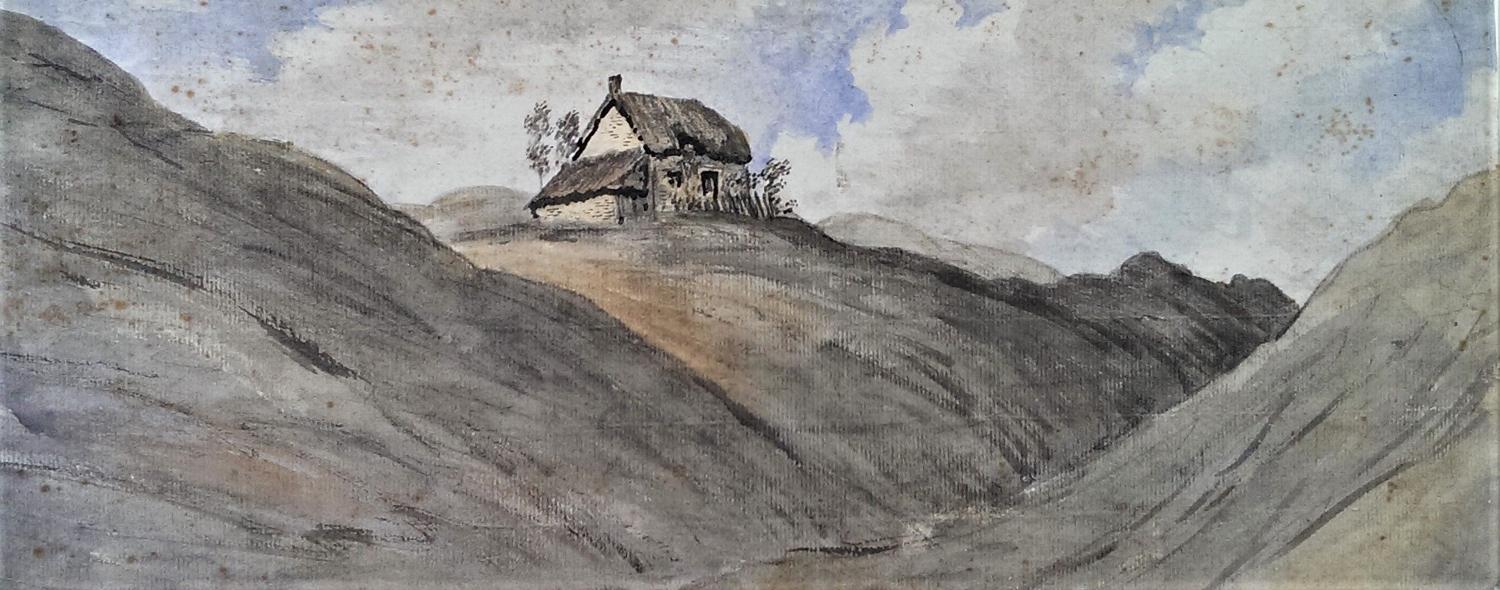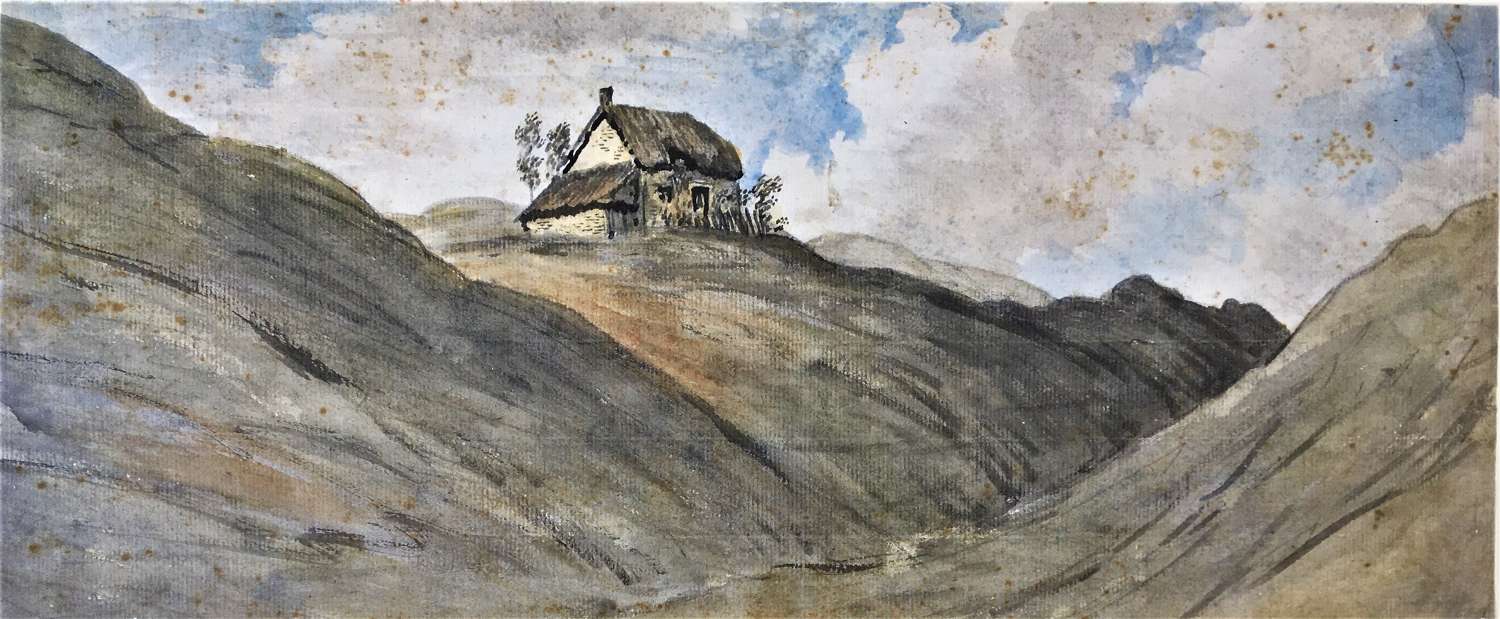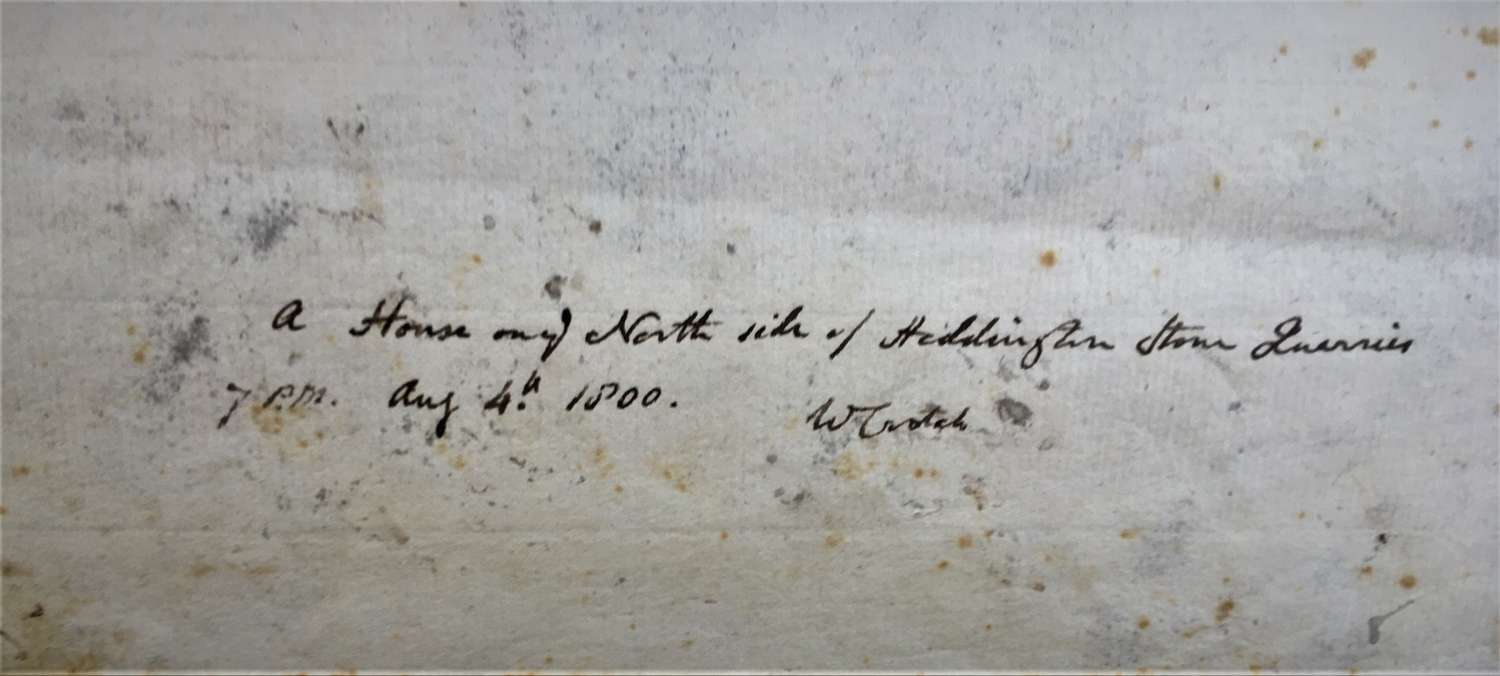
Tregeagle Fine Art |
Tel: 01865 882 854 Email: sandyrich71@gmail.com Web site: https://www.tregeaglefineart.com/ |
|
Code: 10102
Dimensions:
Acquired by The Friends of Quarry (Headington Quarry conservation group, Oxford)
Dr William Crotch (Norwich 1775 – Taunton 1847)
“A House on the North Side of Headington Stone Quarries, 7pm Aug 4, 1800”
Watercolour on laid paper
Inscribed in the artist’s hand and signed (on the back of the image)
16.8 cm x 41.1 cm
Provenance:
Private Collection, Oxfordshire, UK
This striking image, which could almost be a set design from a 20th Century psychological thriller, is an unusual early 19th Century topographical painting. Crotch has recorded the scene near one of the quarries in the village of Headington (situated on a hill just northeast of Oxford). Corallian limestone (also known as Coral Rag, Headington Hardstone or Freestone) had been excavated from this location as long ago as the 11th century and had been used in the building of many of England’s most famous landmarks (including numerous Oxford Colleges, Windsor Castle and Eton College Chapel). Over the centuries thousands of tonnes of stone were quarried and extracted and the topography of Headington was fundamentally altered. By the 1800's much of the premium, workable stone had been used, leaving Headington as an extraordinarily stark landscape: a rabbit warren of hollows, stone pits and waste heaps with ancient, bleak and isolated quarrymens' cottages overlooking former workings. During the course of the imminent Industrial Revolution Headington, which had been connected to Oxford by a single muddy track which led out to the network of pits, was subsumed within the Oxford suburbs.
The artist, Dr William Crotch, was a talented draughtsman but, in his own time, was more famous as a musician and composer and as the first Principal of the Royal Academy of Music. Known as “the musical phenomenon of Norwich” from an early age he displayed a talent of being able to play any tune on a keyboard and was taken to London by his ambitious mother to show him off as a child prodigy. In 1779, aged just 4, he played for King George III and Queen Charlotte and at the age of 13 went to Cambridge to become the assistant to Dr John Randall, organist of King's College Chapel. He was appointed organist of Christ Church Oxford in 1790, graduating as a Bachelor of Music in 1794 and became Heather Professor of Music at Oxford in 1797. He was appointed to become the first Principal of the Royal Academy of Music in 1822. Crotch Crescent in Marston, Oxford is named after him.
Whilst he was up at Oxford, William Crotch became acquainted with the German born artist, musician and folksong collector John ‘Baptist’ Malchair (1730-1812) who was one of 18th Century Britain’s most influential drawing-masters. Crotch followed Malchair's practice of recording the exact time and date when pictures were painted. Between them the two men depicted many of the now vanished views in and around Oxford. Shortly after moving to London in 1805, Crotch became acquainted with John Constable (1776-1837), who was just a year his junior. The two men remained friends until the end of Constable’s life. It highly likely that Constable began his own custom of inscribing sketches with the precise times and dates of their creation through following Crotch’s example. The work here shows the influence of Crotch’s master Malchair but also the choice of composition and the colouring is evocative of the work of Francis Towne (1739-1816).
A similar though less striking watercolour by Crotch is held by the Bodleian Library, Oxford [see M.S. Top. Oxon .c 475 f.95] which is inscribed and dated “Jones The Stonecutters, Headington Stone Quarries WC [William Crotch] 1st Aug 1799”.
Bibliography
Jonathan Rennert, "William Crotch (1775-1847): Composer, Artist, Teacher", Terence Dalton, Suffolk, 1975


